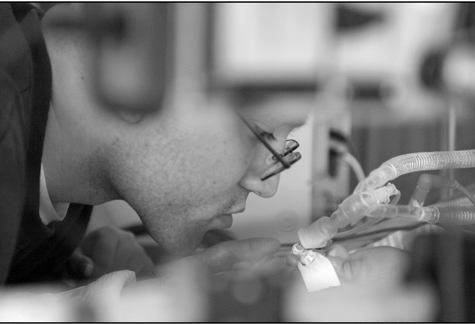 About the Work
About the Work
When a baby dies parents are caught unaware as typically they move through pregnancy with awe and wonder and joyful anticipation of the day of birth. Whether a miscarriage, stillbirth, or infant death, each parent embarks on a unique path of grief facing an awful disruption of life assumptions. This is not the natural order of things. Often this may be young parents’ first encounter with death. Family, friends, and community are subsequently struck with the challenge of how to respond to and support these parents, in addition to coping with their own grief. There is oftentimes an awkward dance that occurs during bereavement where would-be supporters are not sure how to behave or communicate with bereaved parents for fear of stirring up more pain. They, too, are faced with a need to reconstruct their own realities. Some wind up doing ‘less than’ or offering platitudes they think will comfort that often do harm. For their part, some bereaved parents concerned with being the downer in social settings, may not share or socialize at all. Yet they may yearn for acknowledgement and acceptance of their baby’s existence in the family and their own place in grief—wherever that may be. When they don’t receive this acknowledgement, parents may feel the additional pain of isolation. As parents move through grief they also may struggle with holding on to memories and feelings about this short time with their baby, in the extreme some may wonder if their baby ever was.
Typically, families possess a myriad of photographs and video of their children. Families whose babies need intensive care tend not to photograph as much and consequently have few images to hold if their baby dies. Parents of stillborn babies have even fewer mementos. Documentary photographs taken of these babies in the time parents have to spend with them can help to tell their “story.”
About the Photographer
My documentary bereavement photographs are made after delivery, in the hospital labor and delivery area or in the neonatal intensive care unit; during the private time parents have to hold their dying or dead baby. I work to create photographs that can serve as a gentle link to memories and feelings pertaining to the precious short time spent with their baby. Working unobtrusively as a willing participant, I make images about this experience without posing or electronic flash. Though the images typically show mom and dad with their baby, often other family and caregivers are included, and religious rituals may be performed. These significant caring relationships and rituals are important to render and I also strive to elucidate the emotional and spiritual energy in the room.
During more than nine years of this work, I’ve learned from parents that the photographs facilitate their grieving by:
- making their baby’s life and death real for them—a significant issue with perinatal death and an acknowledgement so important for parents;
- validating their feelings, both at the time of their baby’s death and up to the present;
- being an affirmation of parenthood;
- providing a tangible record of their time with their baby, including cherished close-up details of their baby’s physical features and evidence of loving familial bonds;
- allowing them to connect with the many feelings and memories that may have gotten lost in the torrent of overwhelming grief at the time or in the weeks since;
- offering them an illustrated narrative of “their story” for themselves and the loved ones they choose to share it with, fostering greater social support and connection. – Todd Hochberg
To see Hochberg’s work and read more about it, visit:http://www.toddhochberg.com/





